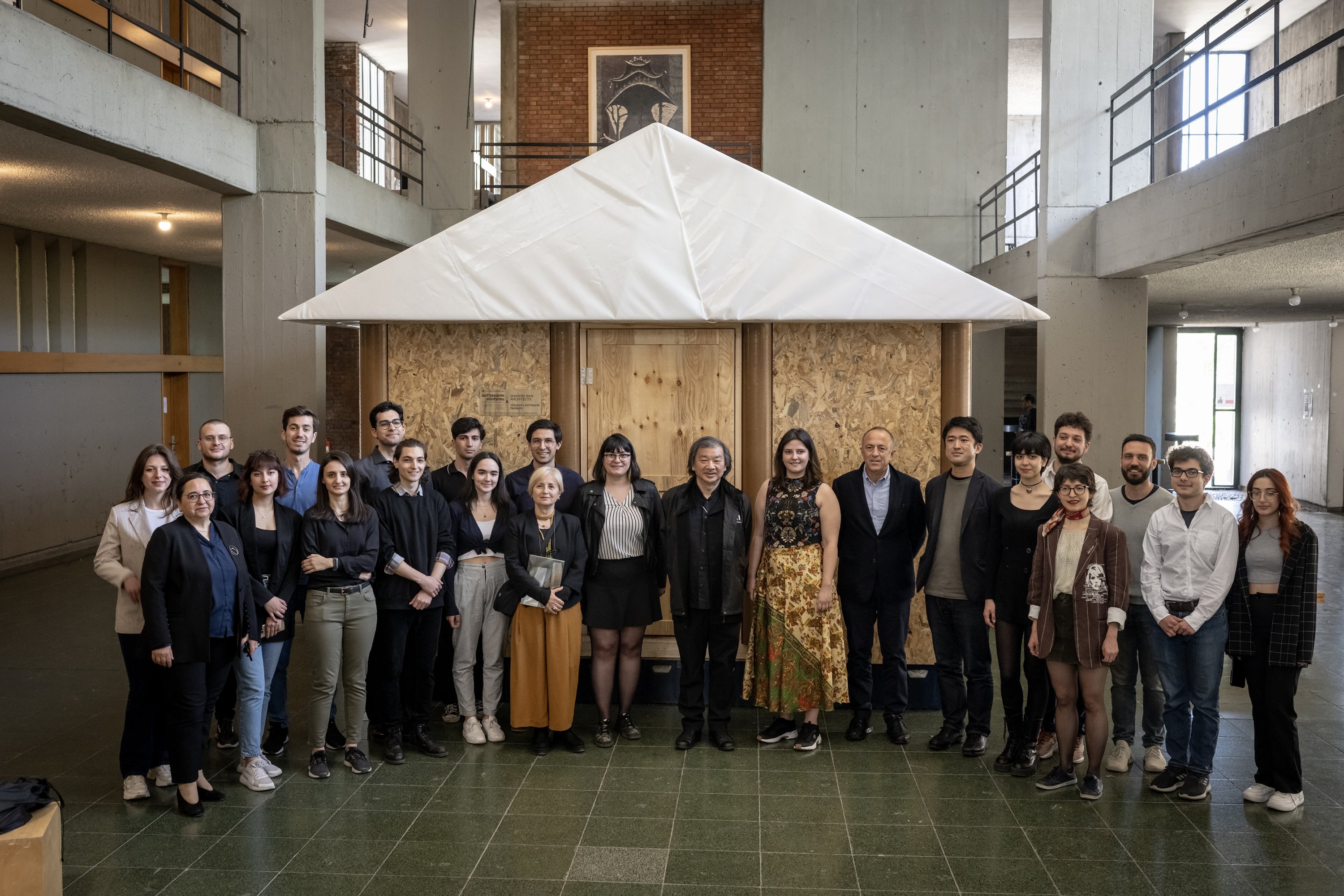© Turkuvaz Haberleşme ve Yayıncılık 2024
The installation of the "paper bobbin house," designed by award-winning Japanese architect Shigeru Ban by using recycled, environmentally friendly materials, has begun in Türkiye’s quake-hit province of Hatay, according to reports Thursday.
The architect, who arrived in Türkiye to personally oversee the implementation of his design in Middle East Technical University’s (METU) "Emergency Studio," spoke to Anadolu Agency (AA) and noted that using materials such as paper and particleboard he had already designed structures for emergency evacuation areas in Japan, Italy and Türkiye.
Recalling the powerful earthquake that struck the Marmara region in August 1999, Ban noted that "Shigeru Ban Architects" and the "Voluntary Architects Network (Volunteer Architects)" had designed about 70 temporary structures for the earthquake-hit zone.
Ban, who decided to get in touch with METU students from the Department of Architecture following the recent Kahramanmaraş-centered earthquakes, said students from Japan also expressed interest in "doing something" after the disaster, so they consequently embarked on the project.
"The structure we designed for the earthquake-hit zone is a completely new project," Ban explained. Noting that primarily the projects were designed to serve as temporary shelters, Ban said the house can serve as permanent lodging as long as people need it.
"The designs of the building start with me. Then I made a prototype of the design with my students in Japan," he said.
He stated that as the same materials used in Japan were not available in Türkiye, they kept in touch with METU students during the period of construction to figure out which type of local materials could be used to deliver his design.
Adding that he liked the paper bobbin house built in METU, Ban said, "It is very strong, very well made and a very beautiful structure."

Underlining the advantages of the house in terms of being environmentally friendly, Ban said that the paper core material, which is primarily used as a column and consists of recycled papers, has an economic advantage at the same time.
"The fact that the paper bobbin house is functional, economical and beautiful sets it apart from the others," Ban said, underlining the ease of installation as well. Additionally, the architect also noted that the delivery and transfer of the structure to the earthquake-hit zone would be a smooth process.
The fact that the structure was being made at the university gives the students the opportunity to gain necessary experience they cannot have elsewhere, according to Ban.
Tuğba Özer, a lecturer at the METU's Faculty of Architecture, stated that after the prototype, around 20 more paper bobbin houses are planned on being produced.
A research assistant at the same faculty, Ömer Faruk Ağırsoy, elaborated on the details specific to Japanese architecture that were included in the adjunct intricacies of the building, namely the junction of the columns with the walls and the floor. "These connection elements were cut with CNC machines. There are special joint details on the roof as well," he added.
Ağırsoy mentioned that the construction of the building, including the outer areas and walls made of particle boards, has been insulated to regulate temperature. As a result, the building can offer a suitable environment for occupants in both summers and winters.
Recalling the Japanese expertise in the field, Ağırsoy stated that the house was designed with no base, underwent several tests and it was ascertained that the structure is able "to absorb lateral forces in the eventuality of an earthquake."
One of the students, Selen Ilhan described the construction process as interesting and inspiring, adding, "We foresee the house we designed can be used for two-three years without any issue."
